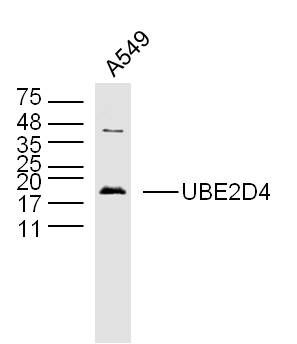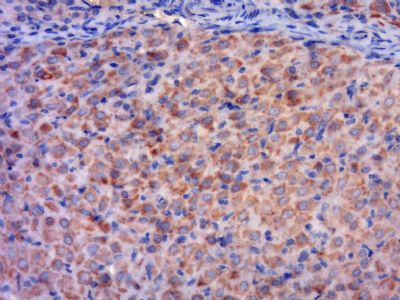Paraformaldehyde-fixed, paraffin embedded Rat ovary; Antigen retrieval by boiling in sodium citrate buffer (pH6.0) for 15min; Block endogenous peroxidase by 3% hydrogen peroxide for 20 minutes; Blocking buffer (normal goat serum) at 37°C for 30min; Antibody incubation with UBE2D4 Polyclonal Antibody, Unconjugated (SL8354R) at 1:600 overnight at 4°C, DAB staining.

